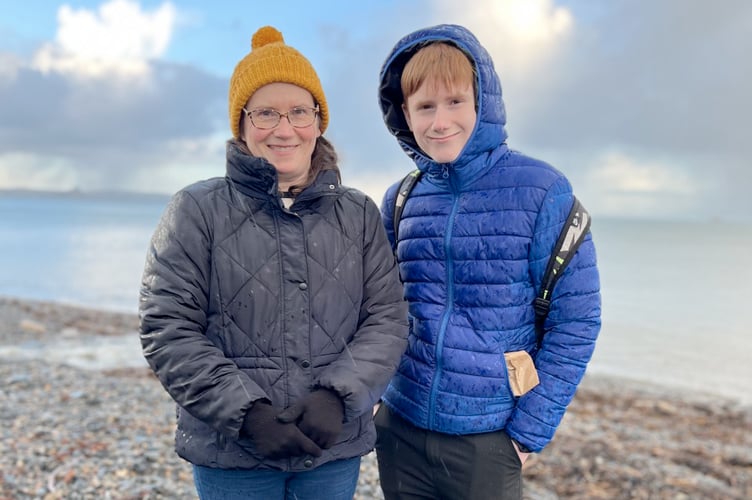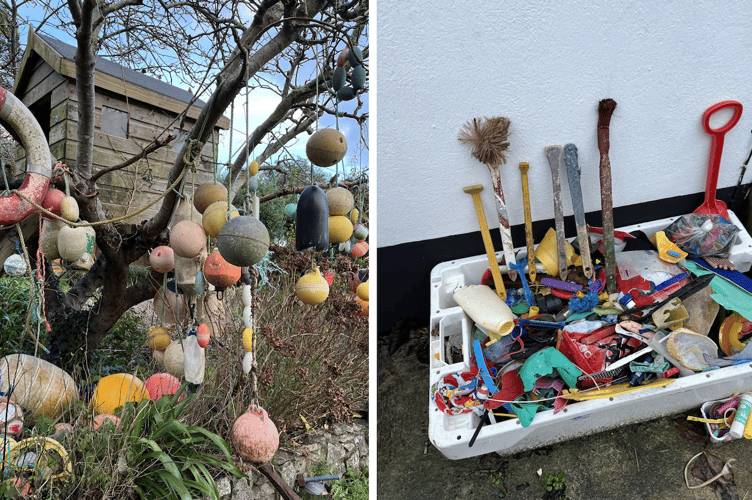Two objects cast away from the same spot in Canada have washed up 3,800 miles away on the same stretch of coast in Cornwall - and just a month apart.
Mum Nadine Nicholls, 52, and son Louis-Matisse Nicholls, 15, discovered the first mystery item in December while cleaning up their local coastline.
It was unlike anything they’d found before in their 13 years of beach cleaning – and they were shocked to discover it had come all the way from Nova Scotia, Canada.
Known as an Isphere, the unusual object was used to track oil spills and ocean currents, eventually washing up on Marazion beach, Cornwall.
Incredibly, they found a second Isphere 10 miles down the same coast just a month later - leaving them amazed by the coincidence.

Nadine, from Penzance, Cornwall, said: “We thought it was a fishing float but when we got closer to it, we realised it was a device.
“It’s a device which can be used to study the current, temperature or can be used in case of oil spill.
“[The first sphere] was dispatched into the sea in November 2021 and we found it on Marazion beach in December 2022 - it took about 13 months to cross the Atlantic.”
With the help of dad Phil Nicholls, 60, the family began cleaning up their local beaches when Louis-Mattisse was a child.
Their environmentally friendly hobby continued as he got older, and now the pair visit the shore up to four times a week to collect and recycle rubbish that has washed up.
As well as recycling the items they find, they try and contact the companies responsible for producing the items to ask why they’re washing up on the beach.
And after finding one rare Isphere in December, they found another one in January – leaving them questioning why two were found so close together.
The second sphere was found at St Loys Cove, 10 miles away from Marazion beach.
Louis-Matisse turned to the beach-cleaning community to find out if others had found similar items - but no-one had.
Nadine said: “Recently with the storms, we’ve seen a lot of unusual items and this one caught our eye because it was very big.
“Often when we find something unusual, we contact the companies directly – we try to recycle as much as we can and ask the companies what we should do with the items.
“They told us they can track the Isphere and sent me a map of where it had travelled which is what made it very interesting.
“They said we have to recycle it as a small electronic item – there are batteries inside which are dangerous so it has to be recycled properly.
“At the moment, because of the massive storms, we’ve been finding lots of things from the lobster industry in America and Canada.
“As soon as Louis-Matisse could walk on the beach he was picking up rubbish – his work has been recognised as a young citizen of the year.”

A spokesperson for MetOcean said: "While we realize that deploying these devices into the ocean can be considered detrimental to environmental efforts, we manufacture and sell these in hopes of an opposite impact.
"The iSphere is an expendable, low cost, bi-directional (communication) spherical drifting buoy developed to monitor and maintain the offshore oil industry, ocean freight industry and the oceanographic scientific community.
"The buoy was designed specifically to track and monitor oil spill incidences. The use and study of the data obtained by the iSPHERE helps future generations with mathematical models that simulate the trajectories of potential hydrocarbon spills.
"This type of study is especially important in areas of special ecological sensitivity and regular maritime traffic. Our goal is a net positive impact with this device.
"The Surface Velocity Program (iSVP) drifting buoy is a Lagrangian current-following drifter, designed to track water currents (15 metres depth) beneath the ocean surface.
"Developed for unattended operation in the oceans of the world, the SVP consists of sensors to acquire meteorological and oceanographic data, a battery power source, and a satellite transmitter that relays the data through satellite systems.
"This specifically assists environmental researchers to determine, predict and monitor ocean currents temperatures and many other metrics.
"Our development of the buoy was in response to the need for concrete information on the state of our oceans."





Comments
This article has no comments yet. Be the first to leave a comment.